One-Room Schoolhouse/Hensley Town Hall
Introduction
Text-to-speech Audio
Images
Outside of One-Room Schoolhouse/Hensley Town Hall
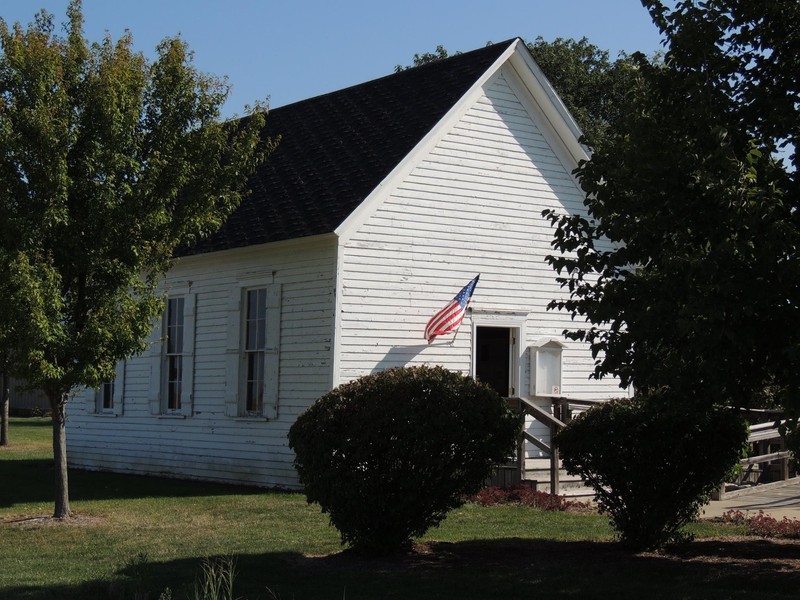

Inside of One-Room Schoolhouse/Hensley Town Hall
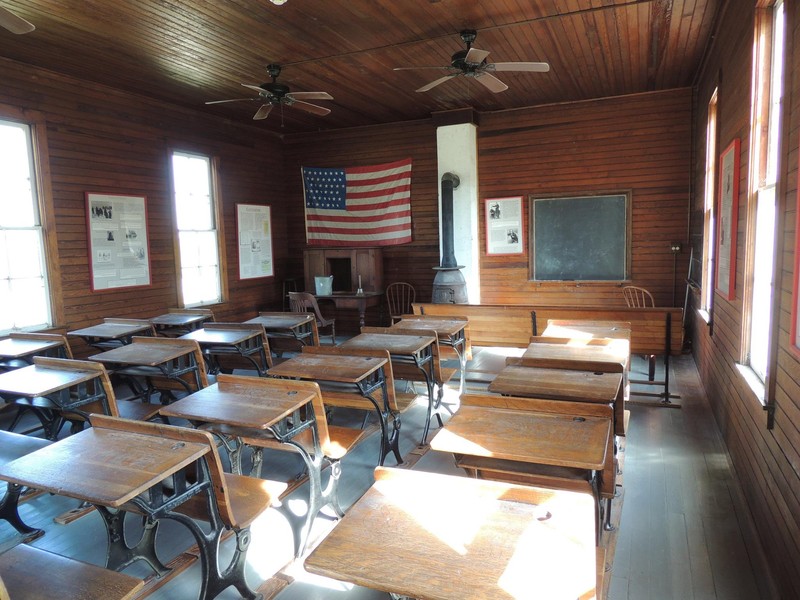
Student writing on slate at their desk during schoolhouse lesson
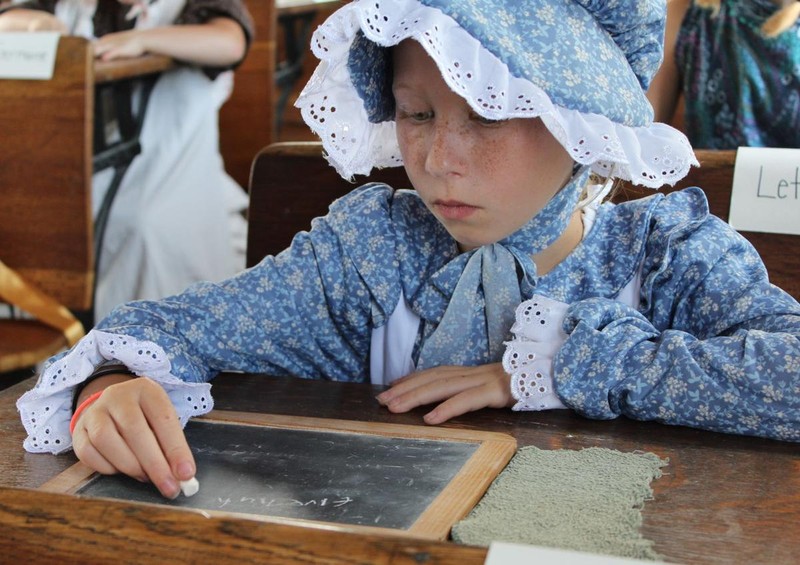
Student writing on slate at their desk during schoolhouse lesson

Student standing to answer teacher's question
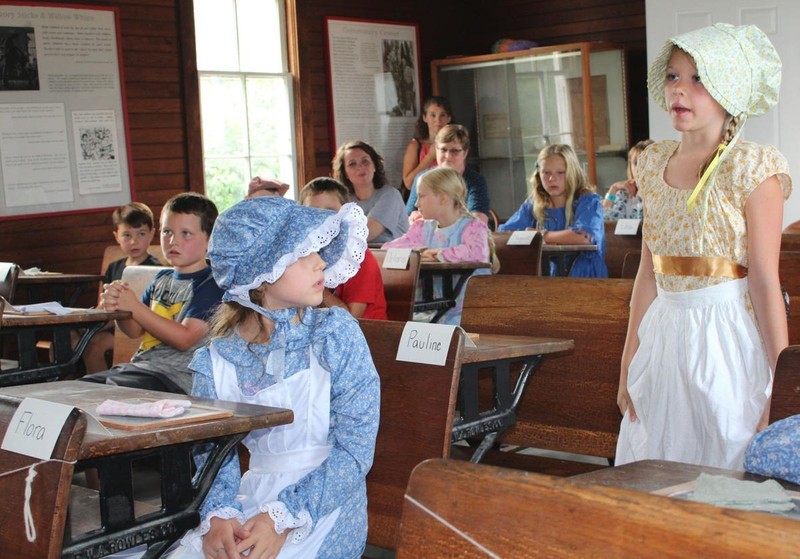
Student writing on board during schoolhouse lesson
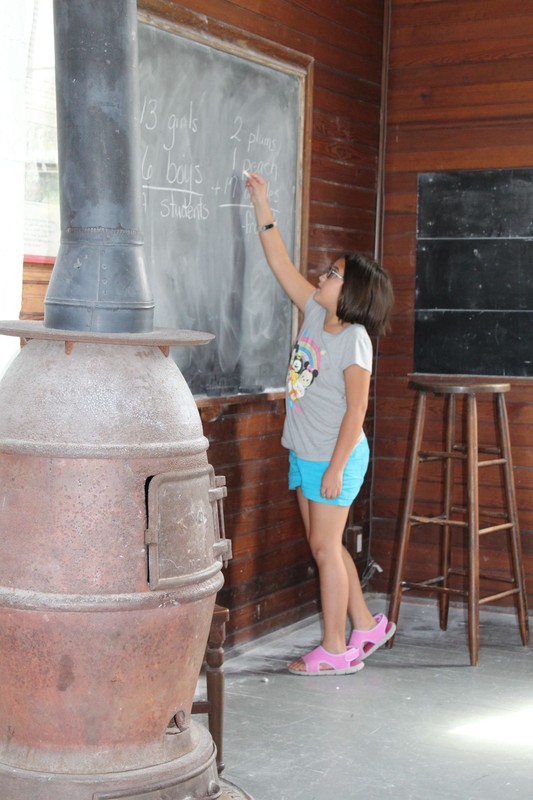
School marm teaching students how to bow
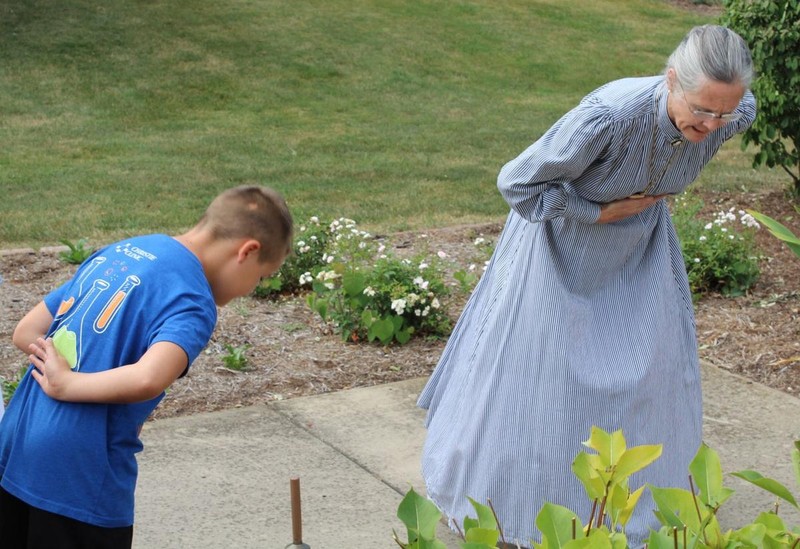
One Room Schools map, Champaign County 1915-1916
.jpg)
Sandy Lu teaches students the game of "hoop and stick"
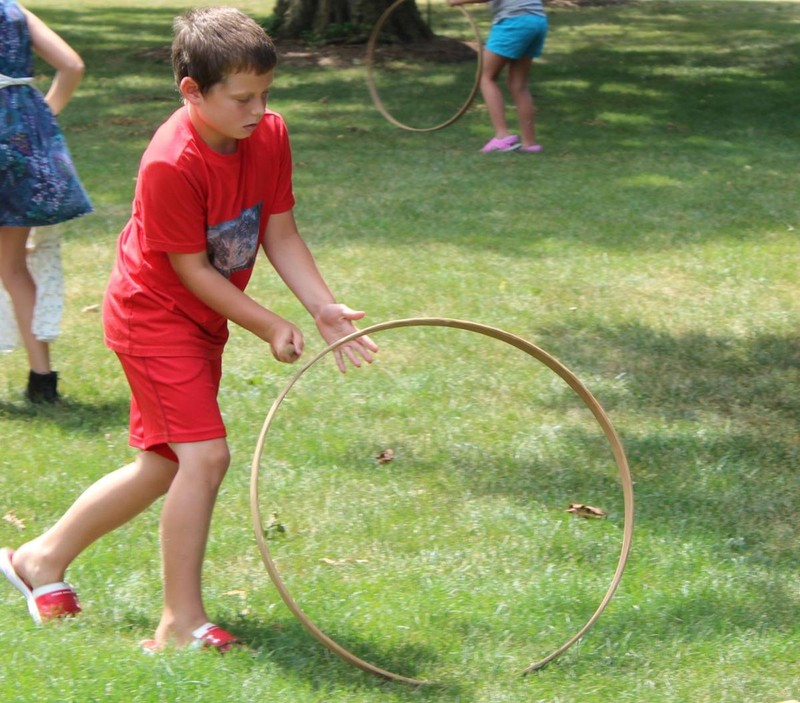

Backstory and Context
Text-to-speech Audio
Before it was a one-room schoolhouse, the building was Hensley Town Hall located in Hensley Township. Hensley Township is located between Mahomet and Champaign, Illinois. The building was physically lifted and transported to its currently location, just a short walk from the Museum of the Grand Prairie in Mahomet, Illinois.
For almost 250 years, one-room schools existed as the foundation of American education. Idealized in the books of Laura Ingalls Wilder, the paintings of Norman Rockwell, and in movies and television, one-room schools are among the most enduring symbols of America's rural past.
Some European immigrants settled in the ethnic neighborhoods of large cities. Others made their homes in rural areas and established their own communities and schools. Some immigrant children attended one-room schools with other students outside their ethnic communities, where they often had problems communicating with their teachers and classmates until they learned English. Once they had, they would teach it to their parents. Through their children's schools, immigrants were able to adjust and adapt to American culture.
The popular image of the "little red schoolhouse" is an overused stereotype. 19th century schoolhouses were constructed from a variety of materials- logs, sawn, lumber, stone, brick, and on the western prairie, even sod. Red brick schoolhouses were popular in the later half of the century, but many were wood framed and often painted white. built on assorted shapes and sizes, some drew on professional designs in Greek Revival and Gothic styles. Others were based on functional and inexpensive plans chosen by local school trustees. Most were small enough for the teacher to be heard at all ends of the room. Many were rectangular and symmetrical, with the same number of windows on opposite long walls and a door in the middle of the front wall. Some even had two doors, one for boys and one for girls.
Many children started their day very early, rising to help with family chores like fetching wood, drawing water, and helping with breakfast before leaving for school. The school day commenced with the teacher calling his or her students in order, often with a bell if one was available, and beginning with the opening exercises. Schedules varied from school to school but eight hour days, including noon and recess times, were not unusual.
Throughout the 19th century and well into the 20th century, most children made their way to school on foot, summer or winter. Some were fortunate enough to travel by horse or pony, or be taken in the family buggy. Consolidation of rural school districts in the early part of this century meant that children had to travel further for school. By 1915, some students rode to school in cars.
Basic education was important to the quality of life in the 19th century. In the first half of the century, a curriculum of "readin', ritin', and rithmetic" met the needs of most rural children. Understanding the bibles, newspapers, agricultural journals, and other books required some reading ability. Good penmanship was considered to be a sign of culture and certainly one had to write to keep business, farm, and household records.
Blacksmith, farmer, storekeeper, and miller alike needed basic grasp of arithmetic, to conduct business. In the latter half of the century, school reformers successfully expanded school curricula to include more history, geography, and new subjects like science, art, and health were added.
Men dominated the education profession in the first half of the 19th century. Women taught in private and urban schools, but teaching in most rural schools remained men's work. By the 1850s, this situation was changing. As the population of the Midwest increased dramatically thanks to the railroad, so did the demand for teachers. The economic growth touched off by the railroad meant broader, and better paying job opportunities for men. The Victorian emphasis on women as nurturers of children also helped pave the way for a growing number of female teachers trained in eastern and midwestern academies and colleges. Schoolmarms far outnumbered the school masters in one-room schools by the end of the century. Although fewer in number, schoolmasters still received higher pay.
Women became the preferred schoolteachers, especially for younger children. They were viewed by society as providing a natural bridge between mothers at home and the classroom. As such, they were held to high standards.
Severe discipline was an accepted and expected practice in the one-room school. The corporal punishment handed out to unruly students was a reflection of the discipline practiced in many homes. Along with "thrashings" with hickory sticks or willow whips, other measures included hitting with rulers, sitting apart from classmates, holding one's arms straight for several minutes, or standing in the corner.
The one-room school served as the community meeting place as well as a community meeting place as well as an education center for children. The community would gather at the school for student and social functions as well as political events since the schoolhouse might be the only public building for miles around. Religious services, weddings, and funerals were held in country schools prior to the construction of churches. Programs provided for the community by the teacher by his or her students were important events. Christmas programs and eighth grade graduation drew the most attendance, along with spelling bees. When consolidation of schools became a threat in the early part of the century, rural communities were very much against the closing of their central meeting place-the one-room schoolhouse. With good reason they feared that once their school was gone, their sense of community would disappear as well.
